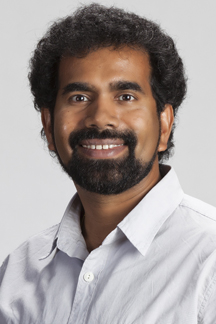Scientists Create Novel Approach to Finding RNAs Involved in Long-Term Memory Storage
By Eric Sauter
Despite decades of research, relatively little is known about the identity of RNA molecules that are transported as part of the molecular process underpinning learning and memory.
Now, working together, scientists from the Florida campus of The Scripps Research Institute (TSRI), Columbia University and the University of Florida, Gainesville, have developed a novel strategy for isolating and characterizing a substantial number of RNAs transported from the cell-body of neuron (nerve cell) to the synapse, the small gap separating neurons that enables cell to cell communication.
Using this new method, the scientists were able to identify nearly 6,000 transcripts (RNA sequences) from the genome of Aplysia, a sea slug widely used in scientific investigation.
The scientists’ target is known as the synaptic transcriptome—roughly the complete set of RNA molecules transported from the neuronal cell body to the synapse.
In the study, published recently in the journal Proceedings of the National Academy of Sciences, the scientists focused on the RNA transport complexes that interact with the molecular motor kinesin; kinesin proteins move along filaments known as microtubules in the cell and carry various gene products during the early stage of memory storage.
While neurons use active transport mechanisms such as kinesin to deliver RNA cargos to synapses, once they arrive at their synaptic destination that service stops and is taken over by other, more localized mechanisms—in much the same way that a traveler’s bags gets handed off to the hotel doorman once the taxi has dropped them at the entrance.
The scientists identified thousands of these unique sequences of both coding and noncoding RNAs. As it turned out, several of these RNAs play key roles in the maintenance of synaptic function and growth.
The scientists also uncovered several antisense RNAs (paired duplicates that can inhibit gene expression), although what their function at the synapse might be remains unknown.
“Our analyses suggest that the transported RNAs are surprisingly diverse,” said Sathya Puthanveettil, a TSRI assistant professor who designed the study. “It also brings up an important question of why so many different RNAs are transported to synapses. One reason may be that they are stored there to be used later to help maintain long-term memories.”
The team’s new approach offers the advantage of avoiding the dissection of neuronal processes to identify synaptically localized RNAs by focusing on transport complexes instead, Puthanveettil said. This new approach should help in better understanding changes in localized RNAs and their role in local translation as molecular substrates, not only in memory storage, but also in a variety of other physiological conditions, including development.
“New protein synthesis is a prerequisite for maintaining long term memory,” he said, “but you don’t need this kind of transport forever, so it raises many questions that we want to answer. What molecules need to be synthesized to maintain memory? How long is this collection of RNAs stored? What localized mechanisms come into play for memory maintenance? ”
In addition to Puthanveettil, who was the first author of the study, authors of “A Strategy to Capture and Characterize the Synaptic Transcriptome,” include Igor Antonov, Sergey Kalchikov, Priyamvada Rajasethupathy, Yun-Beom Choi, Maxime Kinet, Irina Morozova, James J. Russo, and Jingyue Ju of Columbia University; Kevin A. Karl of the Howard Hughes Medical Institute; and Eric R. Kandel of Columbia University, the Howard Hughes Medical Institute and the Kavli Institute for Brain Science; and Andrea B. Kohn, Mathew Citarella, Fahong Yu and Leonid L. Moroz of the University of Florida, Gainesville. For more information, see http://www.pnas.org/content/early/2013/04/10/1304422110.long
The work was supported by the Howard Hughes Medical Institute, National Institutes of Health (Grants P50 HG002806, MH075026, 1R01 NS060762, 1R01 GM097502, R21RR025699, and 5R21DA030118), McKnight Brain Research Foundation, Whitehall Foundation, and the National Science Foundation (Grant 0744649).
Send comments to: press[at]scripps.edu














